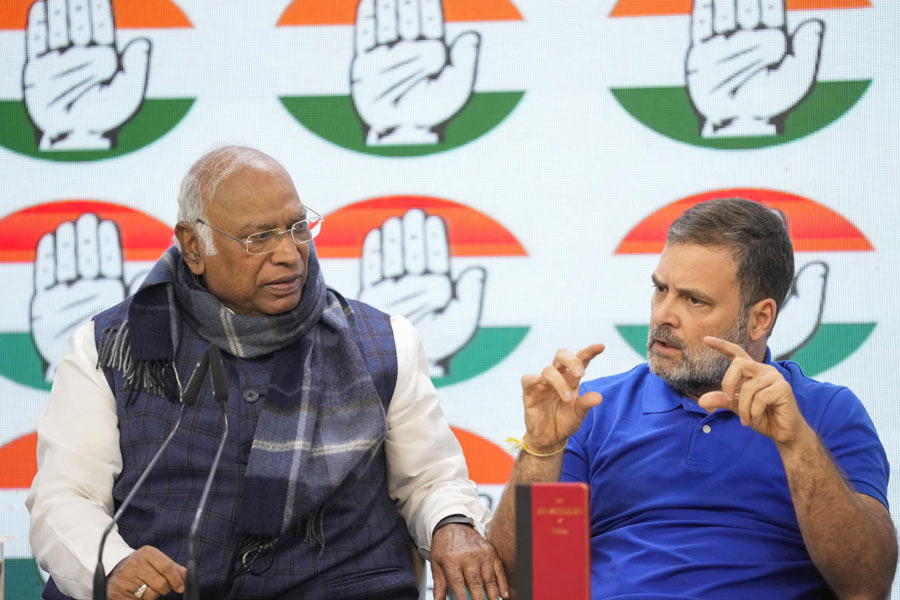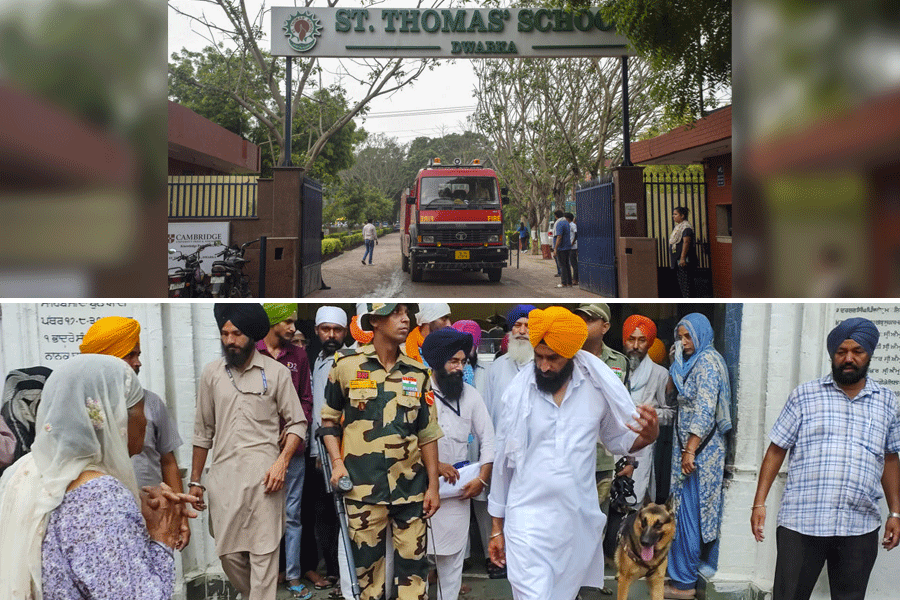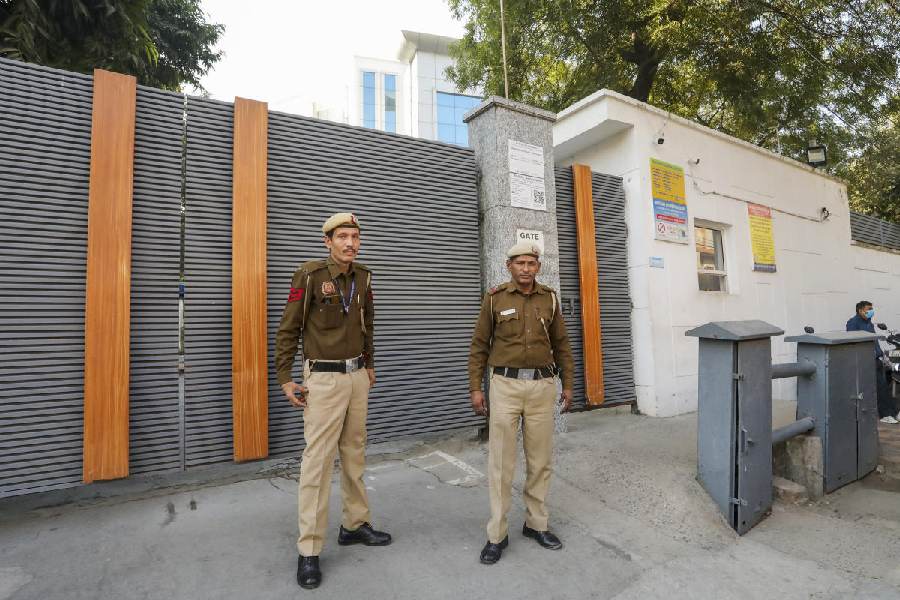 |
The festival of Karma, being celebrated today all over the state, has been related to the harvest and to the Karam tree. It symbolised fertility, prosperity and all that is auspicious.
Strong similarities in rituals have often led commentators to compare the tribal festival with traditional Hindu festivals.
The strings, for example, which are tied round the Karam tree have been equated to rakhi. Women fasting on the occasion have evoked strong resemblance to women fasting for the well-being of their husbands at Karwa Chauth or unmarried women fasting for a desirable partner on Shiva-Ratri.
Of late, some people have even discovered similarities between Karam and the Hindu philosophy of “Karma”. Vested interests, fumes former Ranchi University vice-chancellor Dr Ram Dayal Munda, have taken to organising recitals from the Bhagvad Gita, discourses on it and have also been using the occasion to propagate the cult of Krishna.
The festival that’s celebrated on the 11th day of the lunar calender in the month of Bhado during August-September, falls on September 4 this year.
And of the many tales which have become enduring parts of folklore, one that continues to rule popular imagination is one involving the two brothers, Karma and Dharma, who would often fight, as siblings do, with each other over various reasons.
According to the legend, as recalled by Tulsi Oraon, a member of the Oraon Sarna Samiti, West Singhbhum, once Karma was returning victorious from a battle and Dharma was asked to make preparations to welcome the victor home and worship the hero as he arrived.
But Dharma worshiped a Karam tree instead of worshipping his brother, giving rise to the custom of worshipping the tree.
It may not quite be a good enough explanation but it is the festival when tribes send up prayers to the gods to protect their crops and shower a bountiful harvest.
Some consider it to be an extension of Sarhul festivities, held every year during the start of the sowing season to propitiate the gods for good rains so that seeds may germinate and they may be blessed with a good crop. The Karma festival, too, coincides with events in the agricultural cycle, they point out.
From early morning, unmarried girls, who fast for the day, are ready with their offerings and prayers. Once the religious, traditional rites are over, the tribes go to the forests in search of a Karam tree, cut its branches and bring it back home to plant in their courtyards. Once the puja is over, the farmers take care to plant the twigs in their fields, too. The next day, they follow it up by planting bhelva twigs in all the fields. Farmers select trees which are not eaten by cattle, then cut off the twigs, which are then planted amongst the standing crops. The twigs, it is believed, act as pesticides, warding off even prying birds and locusts from the crops.
But here comes another twist in the tale, if some commentators are to be taken seriously. If earlier unmarried girls fasted for the protection of their crops and a good harvest, the commentators say, many of them now do it in the hope of netting good husbands as well.
Those who are engaged or married, also fast on this day so that they can have healthy children and be blessed with happy married lives.
Dr Munda points out that though unmarried girls still fasted as per tradition, the reasons are different, as some of them do it for the safety of their brothers. “Rakhi and Bhai Dwitiya are alien to tribal society and culture,” he claims.
However, girls today seek blessings for their brothers in an extended version of the Hindu customs. While Munda frowns on the deviation, he feels it has strengthened family bonds, specially between brothers and sisters.
Dr Munda is not as charitable about yet another recent practice, that of pundits propagating the teachings of Lord Krishna to his disciple Arjun on the eve of the Mahabharata war. “The word karam, though in tribal parlance means a particular tree, is now being interpreted as work and action, as propounded by the Gita.”
The festival, however, remains a platform to bring together not just the tribals, but non-tribals, too, who have been increasingly celebrating the festival.
A new dimension this year is the resolve of a group of activists to use Karma to popularise environmental concerns of the tribes and to reassert their links to Nature and restore tribal rights over natural resources.
Dr Munda and a few others like Jharkhand Janadhikar Party vice-president, Ratan Tirkey, and other tribal leaders have stressed that they are going to use this platform to highlight the rights that tribals have over their forest land.
Most people, however, look forward to an opportunity to sing and dance, get together with their friends and families, and sing songs about the legend surrounding the two brothers, Dharma and Karma.
Some, like members of the Oraon tribe, collect sand from the nearby holy river for planting a Java seed (a type of religious seed) as a custom ahead of Karma festival. For a few days, the Java seeds are kept in the sand.
During the Karma puja, the Java seeds are worshiped in the village akhara, which is a common place of worship in the village. On the puja day they worship the Karma tree as part of tradition and immerse it into the river the following day.
![]() When : 11th day of the lunar calender in the month of Bhando during August-September, which falls on September 4 this year.
When : 11th day of the lunar calender in the month of Bhando during August-September, which falls on September 4 this year.
![]() Why : To pray to the gods to protect their crops, and give them a good harvest in the coming year.
Why : To pray to the gods to protect their crops, and give them a good harvest in the coming year.
![]() How : Traditionally, unmarried girls, who also fast for the day, offer prayers very early in the morning. The Karam tree is worshiped, besides the other rituals, and singing and dancing.
How : Traditionally, unmarried girls, who also fast for the day, offer prayers very early in the morning. The Karam tree is worshiped, besides the other rituals, and singing and dancing.










